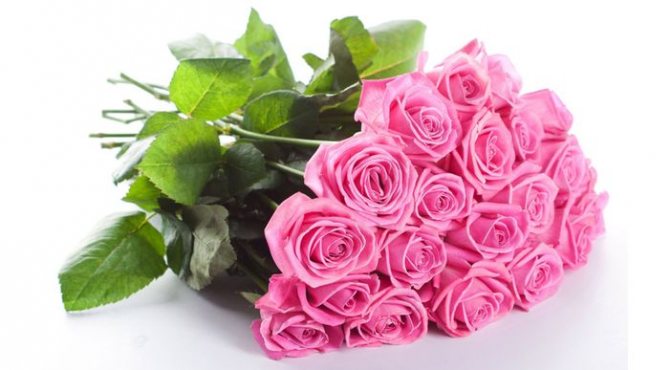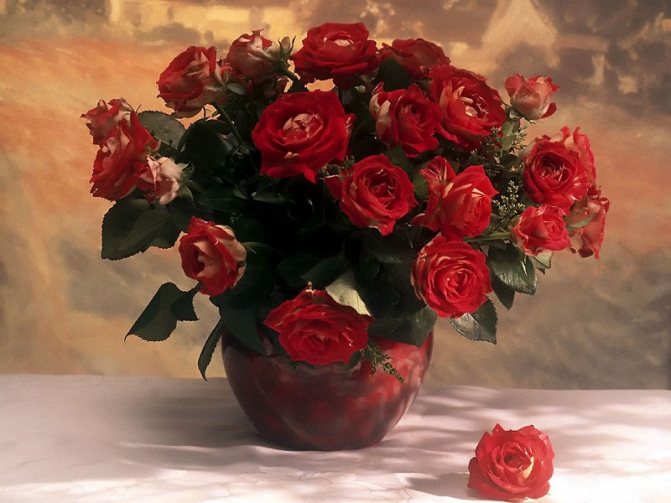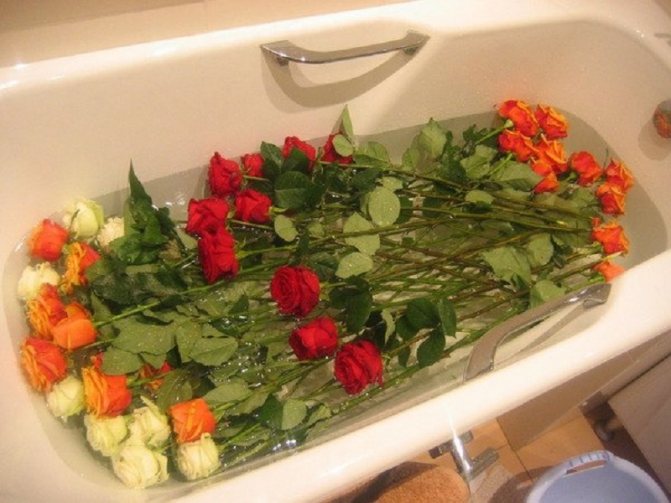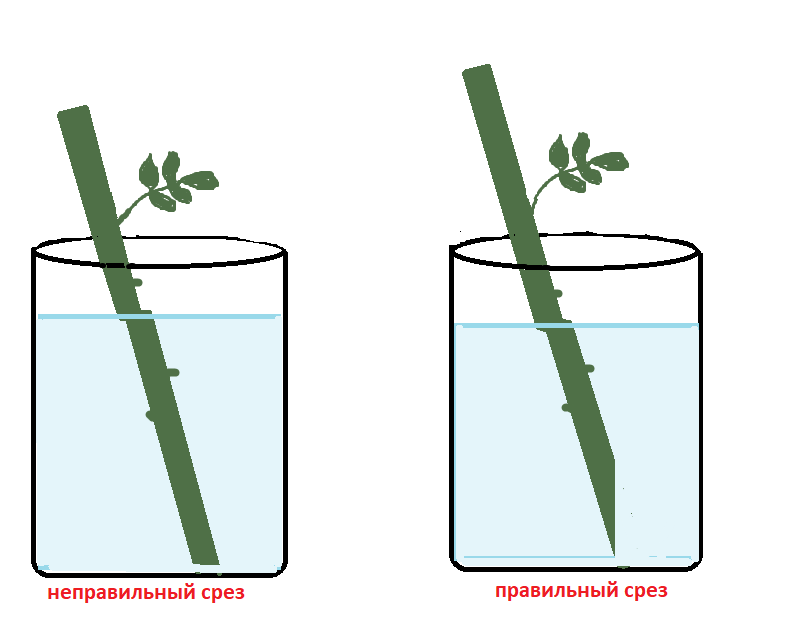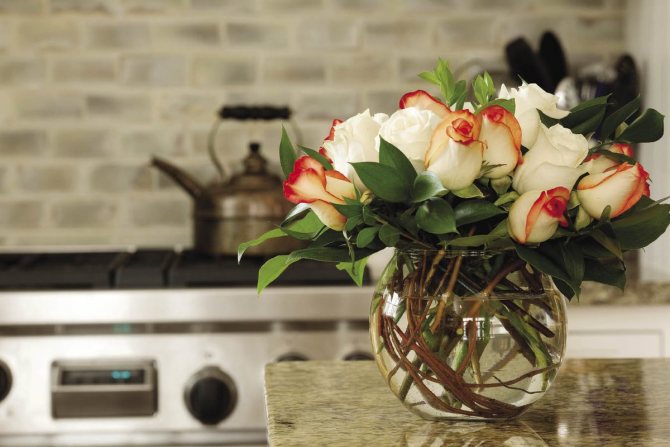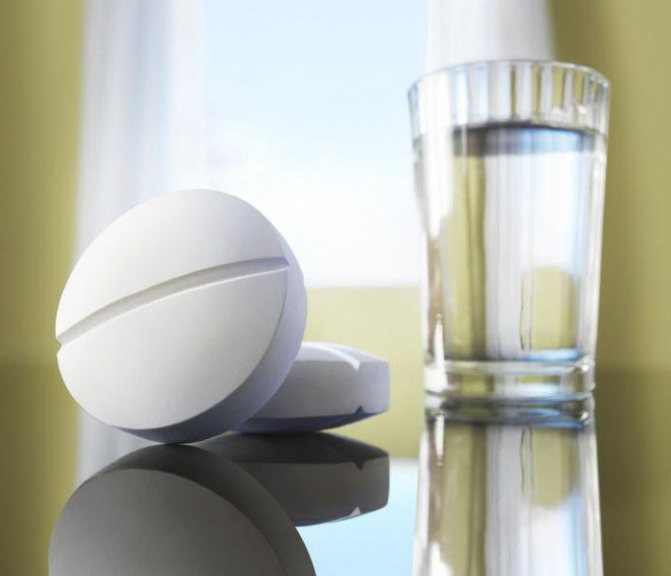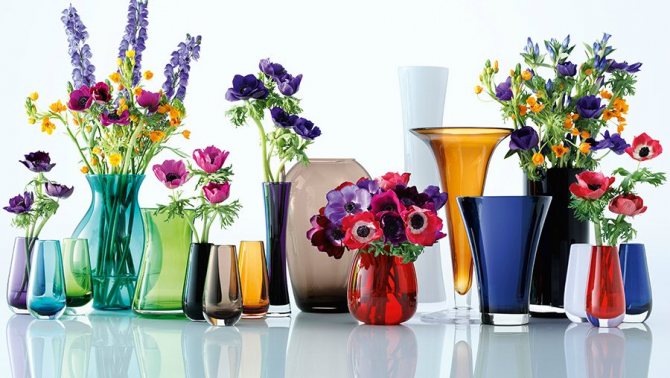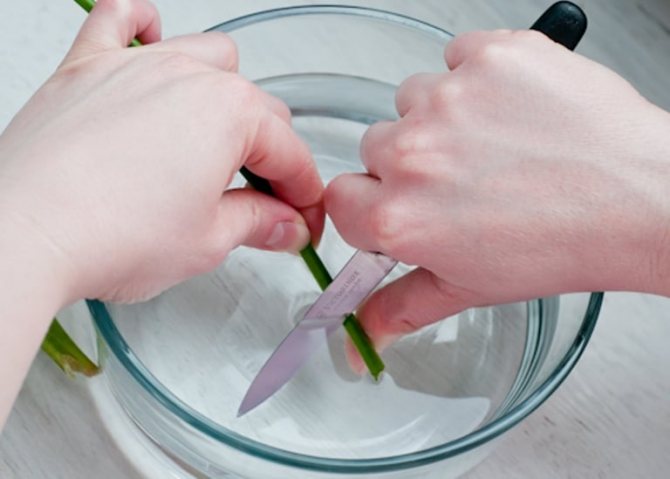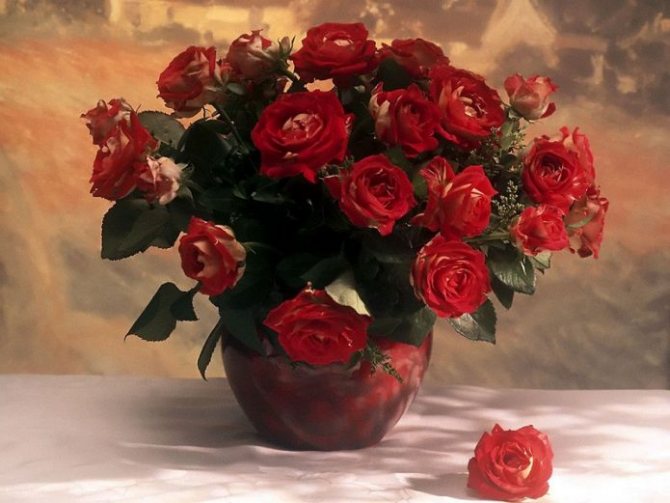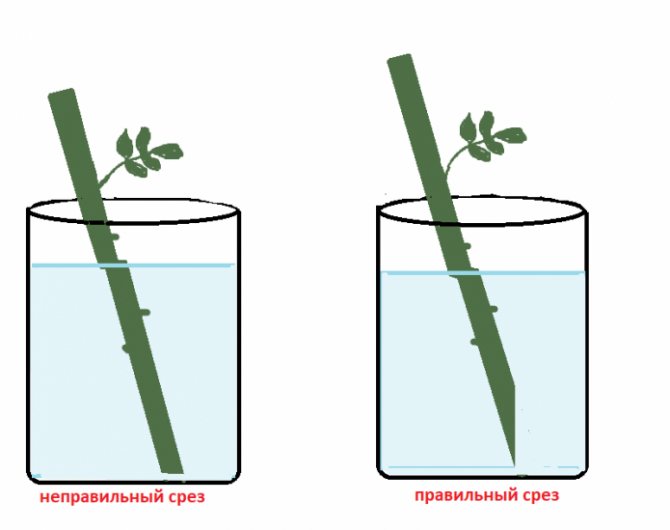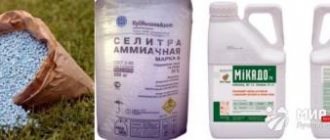Roses are the most beautiful and desirable gift for every woman, they delight and inspire with their royal beauty and magnificent exquisite scent. And in order to admire and enjoy their charm for a long time, each owner of a bouquet of these graceful flowers faces the question: "How to keep roses in a vase longer?"
With proper care, they can be pleasing to the eye for up to two to three weeks.
But in order for the flowers to last longer, you should choose high-quality, freshly cut buds. Some sellers disguise and hide product imperfections.
The freshness of a bouquet is determined by the following criteria:
- The base of the bud must be firm. If the flower has opened completely, and when you press the bud, you feel its softness, then this indicates its staleness. In a fresh rose, the petals adhere tightly to each other.
- The sepal leaves of the fresh plant should be dark ‒ green in color and point upwards. If they have a yellow or brown tint, a fading appearance, or the seller has cut off the leaves, then such a flower is not worth buying.
- The stem of the rose should be firm, firm and thick. The thin trunk at the base of the bud is weak and the rose can quickly wither. The length of the stem does not matter in this case.
- The petals should be free of holes, spots, brown borders and other damage. Sellers mask stale plants and defects by applying special glitters or phyto-paint to them.
- When buying flowers, it is better to ask the seller to compose the composition in the presence of the buyer. In ready-made bouquets under decor and paper, it is easy to hide all the flaws, quality and dubious freshness of the plant.
Note that the rose loves cool temperatures and moderate humidity. Under such conditions, it will remain fresh for a long time, will not lose its beautiful appearance and amazing delicate aroma.
Save a bouquet bought in advance as a gift until the next day, the following tips will help:
- it is immersed and left for two or three hours in cool water;
- the stems are cut at an angle of at least 45;
- wrapped in parchment paper or foil, and placed in the refrigerator.
It is not worth worrying that plants without moisture in the refrigerator can wither. Florists who grow flowers for sale use this preservation method. Cutting the buds and wrapping them in a film, they put them in a cool place (refrigerator, basement, cellar), where the plants can be perfectly preserved for several days.
Roller blinds care: dry and wet cleaning, washing and removing stains
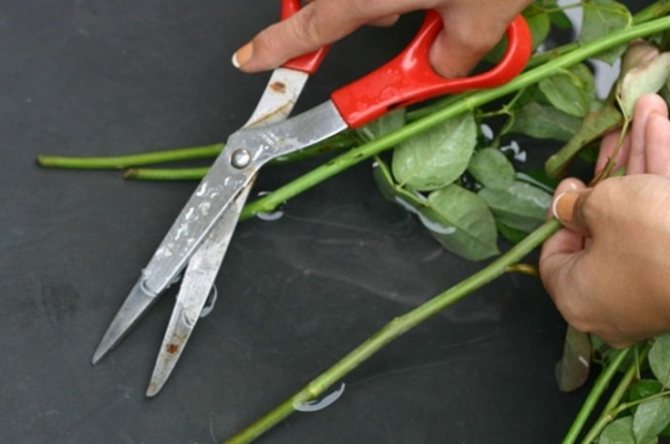
How to prepare a flower
So, you have brought flowers to the house. What to do next? Before sending a bouquet to a vase, you need to carry out a simple processing:
- Bathe the roses. Some flower growers advise putting flowers in the bathroom for a couple of hours so that they absorb the moisture they need. But this point is only necessary if the bouquet was brought from the store, and not cut in the garden.
- Cut them off. The shorter the stem, the easier it will be for the plant to deliver water to its petals and leaves. In addition, water will penetrate better through a fresh, healthy cut. Therefore, all roses, if they are not freshly cut, need to be shortened. It is enough to cut 2 cm, but more can be, depending on the required length. Use a clean, sharp knife or pruner.By cutting off the stems with a blunt blade or scissors, you run the risk of crushing them, as a result of which moisture will be less absorbed. And a few more nuances: carry out the procedure holding the plant under water (for example, in a bowl) so that no air gets into the cut. And make a diagonal cut! This increases the surface area in contact with water.
The stems of the rose should be pruned every 1-2 days. Compliance with this one rule will help keep the bouquet for a week or longer.
- Delete the excess. After trimming the rose, trim off any leaves and thorns that are below the water level. They can decompose and rot, promoting the growth of bacteria.
If the flowers have already wilted a little, then dip the tips of the stems in hot water and hold until the buds rise.
Effective supplements
What to add to rose water? This question is often asked in shops with a large selection of flowers, but florists are not always willing to share their knowledge and experience.
We suggest that you familiarize yourself with: How to store mango - Mom's advisor
Answering the question of how to keep roses in a vase longer, most flower growers recommend using effective additives. It can be either special preparations sold in flower shops and stores, or many different home remedies:
- sugar;
- lemon acid;
- table vinegar;
- aspirin;
- alum.
Ammonia / rubbing alcohol, vodka, a silver spoon, Coca-Cola and Sprite drinks popular among young people can also be used to extend the life of bouquets. If you definitely see that chemical agents were previously used to revitalize the plant, then feel free to add a few drops of any bleaching agent to the vase.
What can be done to make roses stand longer?
In order for the roses brought from the store to delight the owner of the bouquet with their freshness longer, it is forbidden to immediately place them in a vessel with water. Flowers need to be given a few minutes to get used to the new microclimate, you can leave them in the room for 15-20 minutes. After 20 minutes, the flowers are released from the packaging and immersed in a bath or bucket so that the cut is in the water, and the bud is on the surface of the water, and only after three hours the bouquet is transferred to a vase.
So that the leaves do not start to rot, and bacteria do not multiply in the water, flower growers are advised to cut off the lower leaves. It is best to make the cut under running water to prevent air from entering the cut on the stem. It is strictly forbidden to put uncut stems in the vase, since they rest against the bottom of the vessel, which prevents them from absorbing liquid.
The container with roses should be placed in a cool place out of direct sunlight. The water in the vase with roses should be fresh, so you should be prepared for the fact that you will have to change it every day, this will prevent bacteria from developing. In addition to changing the water every day, you will have to rinse each stem under running water.
The upper part of the flower should be sprayed with a spray bottle every day and make sure that no water gets inside the bud, otherwise it will start to rot. The vessel in which the roses are standing must be washed with water and soda at least once every two to three days. Rose is the queen of flowers and requires an appropriate attitude towards herself, she does not tolerate neighbors, especially if these are other flowers and fruits, since fruit midges can harm the flower bud.
The second question that interests the owners of the bouquets - what kind of water are the roses put in, that they stand fresh for several weeks? Usually, standing water is suitable for roses, the temperature of which is not lower than room temperature in winter, and slightly cool water in hot weather.
Useful Tips
By observing the following simple maintenance rules, you can extend the life of gorgeous roses:
- The water is changed every day so that pathogenic bacteria do not start in it and mold does not develop.During this procedure, it is advisable to rinse the edges of the trunks, and trim every two days.
- During the procedure for changing the liquid, the vase is thoroughly washed from the inside with soap.
- If, despite the necessary procedures, the buds began to fade, then you can extend their life with a cool bath. To do this, the roses are completely placed in cool water at night, and in the morning they are put back in a vase of water, where the ammonia has already been diluted.
- There is another way to prolong their flowering - the edges of the trunks are cut off and placed in boiling water for thirty seconds, then rearranged into a container with cold liquid.
- Protect the container with the bouquet from direct sunlight.
- Keep the room cool, as flowers wither quickly in a stuffy room.
- It is necessary to spray regularly, but moisture should not get on the core of the buds.
- Do not use freshly drawn tap water, as it is often contaminated with pathogens.
- After purchasing, try to put them in water as soon as possible. The longer they spend time without moisture, the faster they wither.
What kind of water to pour into a vase
The queen of flowers is capricious and loves care. Do not be lazy to follow simple recommendations so that beautiful buds do not wither.
- Remove the leaves and thorns from the roses that end up in the vase so that they don't rot.
- Immerse the stems in a container of water and cut them off at an angle of 45 degrees at a distance of 1.5-2 cm with a sharp knife. This will increase the area of supply of nutrients, and the capillaries of the flower will not become clogged with air. Do not use scissors: they will injure the edge of the stem.
- Some gardeners recommend splitting the stem into 3-4 pieces with a cutter. But do this carefully so as not to deform the tissues of the plant.
- Fill the vase 3/4 full with water. Roses quickly absorb liquid.
- Use separated tap water if the chlorine concentration is low. For roses, a small amount of antibacterial agents will be beneficial. If there is a lot of chlorine, use a filter.
- Add antimicrobial and nutritional agents. What substances are suitable for feeding roses, read the article "What to add to a vase with roses."
- Change the water daily and cut the stems by 0.5-1 cm. The vase should not only be rinsed, but washed with soap and wiped thoroughly to kill bacteria.
- The ideal room temperature for a bouquet of roses is 18 degrees. But, even if the room is warmer, the main thing is to keep the composition away from the sun and batteries.
- Remove wilting leaves. They take up nutrients.
- If you notice that the roses are starting to fade, revive them. How to do this, we described in detail in the article "How to reanimate roses."
Placing flowers in tap water is not enough. Firstly, the vase must first be washed with soap or treated with an antiseptic. This is important because a dirty vessel can contain microbes, mineral and chemical deposits that will accelerate the process of wilting of new flowers.
Secondly, you need to fill the vessel with cool, preferably purified water, since roses feel best in an environment with as close to neutral pH as possible.
We suggest that you familiarize yourself with the dishwasher does not wash the dishes well - 15 reasons
What if you don't have a water filter? No problem! There are other options:
- Buy purified bottled water at any grocery store.
- Use tap water, but first put it in the refrigerator for 3 hours, or better overnight, so that the chlorine dissipates.
- In extreme cases, boiled water is suitable.
In cold weather, roses will be more comfortable in warm water, and in hot weather, you can even add ice.
Also, plants need "feeding", and they love to eat glucose. Therefore, sugar must be added to the water for roses (1.5-2 tbsp sugar per 1 liter of liquid). But please note that it is necessary to use sugar, and not its substitutes (aspartame, saccharin, stevia, etc.).
The last step in the preparation of water is canning, the purpose of which is to prevent the growth of microorganisms. It will add another week to the life of the flowers. Usually florists use a special preservative for this purpose, but you can use one of the following improvised means (the dosage is indicated for 1 liter of water):
- 1 tbsp alcohol;
- 1 tbsp vinegar;
- 5 tsp citric acid;
- 150 g boric / salicylic acid;
- 2-3 drops of ammonia;
- 2-3 drops of glycerin;
- a pinch of potassium permanganate;
- half a tablet of aspirin.
When filling a vase, be guided by this rule: 1/3 of the stem should look out from under the water. And don't fill the vase tightly. Plants should feel free.
The best thing to do to make the roses last longer is to change the water in the vase every 2-3 days. This will prevent bacteria build-up and maintain a pleasant scent throughout the composition. Don't forget to add a little sugar every time!
Not only roses, but also other plants love sugar. To make the bouquet last longer and stay fresh, add a few spoonfuls of granulated sugar to the vase. Consider how many liters of liquid fits in your vase. Since a couple of spoons of sugar should be put in 1 liter of water.
In hot weather, roses should be kept in cool, but not ice-cold water. In winter and cold autumn, the water should be at room temperature. You do not need to keep roses at will with a warm radiator and in a stuffy room. The room temperature should be 19-22 ° C.
Now we will consider the most common reasons that can lead to wilting roses. Beware of your flowers from these inconveniences and enjoy the fresh scent of roses:
- Incorrect trimming or none at all. Roses must be pruned before being placed in a vase. And you need to do this only in water for 1/3 of the length. Make an oblique cut and split it from below into several parts.
- Rotting. To eliminate the rotting process of the plant, which will naturally affect the freshness of the flower, remove the leaves and thorns to the level at which the rose is in the water. Change the water regularly.
- Incorrect temperature. The icy water will cause the roses to fade quickly.
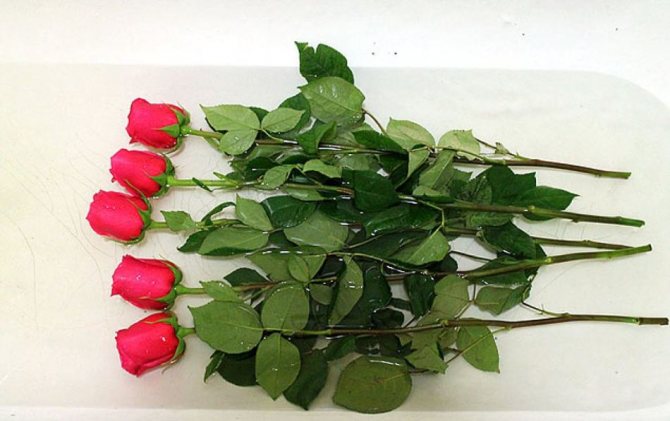

Place roses in a tub of water for longer storage
- Invalid water composition. Not settled, too chlorinated water will definitely affect the freshness of flowers. Therefore, water is ideal for a bouquet, which will stand a little in the room.
- Incorrectly selected vase. The vessel for the bouquet must be high. The stem should be 2/3 submerged in water.
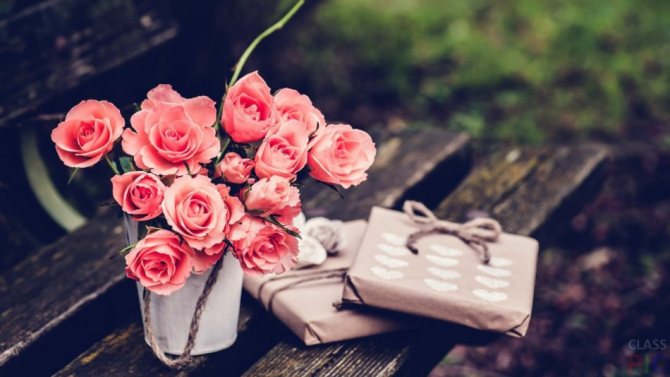

Keep the beauty of roses for a long time
- Lack of nutrients. Remember that roses must be fed with sugar, aspirin and the other ingredients mentioned above.
- A stuffy room and bright light is extremely contraindicated for the queen of flowers. Therefore, place the vase with the bouquet in a relatively cool room with little light. Also keep the roses free from drafts.
- Neighborhood. Roses do not tolerate ethylene gas, which is emitted by fruits. Therefore, do not keep flowers and fruit bowls nearby. Also, don't put roses in a vase with other flowers. After all, not even all varieties of roses are compatible, not to mention different categories of flowers.
- Color. It is important to remember that roses that have dark petals last longer than their light-colored counterparts - be they yellow, white, or powder-colored roses.
We suggest that you familiarize yourself with How to peel gum from trousers
If you properly care for the queen of flowers, then she can delight the eye for up to two weeks. The main thing is to add the previously indicated components, leave the roses in water overnight and spray often. Then a rose in gratitude will delight you day by day.
Preservation of water, specially provided solution for favorable plant maintenance
According to many, regarding the content of roses, it is absolutely impossible to leave them in running water.However, the chlorine contained in water can partly take the place of a preservative, which is extremely important for dead organic matter. For this reason, tap water is suitable for use, but it is worth letting it settle so that all harmful impurities precipitate.
In the event that you are still worried about the quality of tap water, take boiled, the remaining field of snow or distilled.
Next, you need to prepare the correct solution. Whatever the liquid, it should be "preserved" in any case so that harmful bacteria do not breed.
There are several ways to create a chemical substance, depending on the ingredients at hand:
- in 1 liter of water, it is necessary to dilute half a tablet of ordinary aspirin;
- in 1 liter of liquid, dilute one and a half teaspoon of granulated sugar and one tablespoon of vinegar essence;
- in 1 liter of boiled water, dissolve two tablespoons of granulated sugar and one hundred and fifty milligrams of salicylic, boric or citric acid;
- drip one drop of detergent or super bleach into a container of liquid. However, this method only brings results to foreign types of roses, which are already accustomed to a chemical reaction;
- add a floristic preservative purchased in a specialized store to the water.
In some cases, as preventive work to help prevent decay, a silver object or a few pieces of charcoal is dipped into the liquid.
Why and how to add sugar to a vase of roses?
Many centuries ago, avid flower growers added various improvised means to the water and kept the flowers fresh for a long time. Modern flower growers use more innovative substances, but still previously proven means do not make the effect worse.
A wonderful solution would be to delay the withering process of roses with the help of the following components (use per 1 liter of water):
- Charcoal (a pinch of powder).
- Ammonia or camphor alcohols (a few drops).
- Sugar (2 tsp).
- Aspirin (1 tablet)
- Bleach (a few drops). Good for artificially bred plants.
- Vinegar (1 tsp).
- Alum (a pinch of powder).
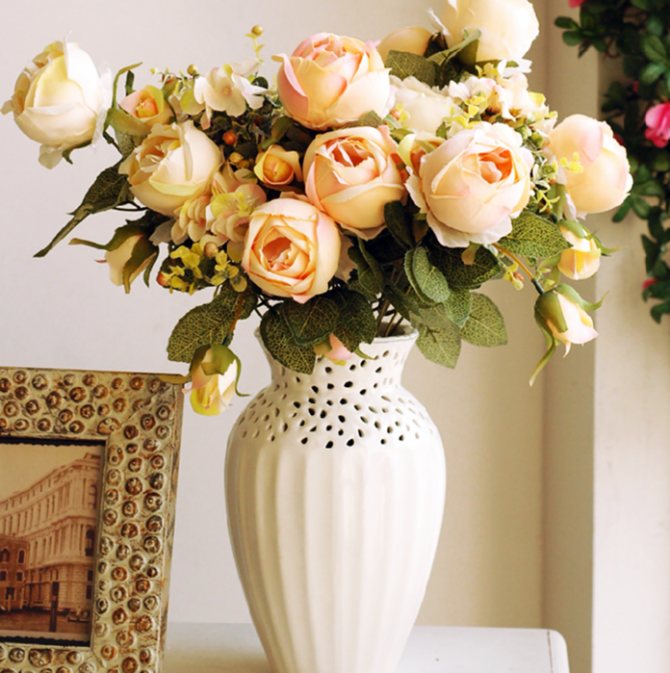

It is important to add firming additives to roses.
But you don't need to use multiple supplement options. This will only make things worse - contacting components can accelerate the process of wilting of plants.
Aspirin is used as an agent that can weaken the decay process. It must be used in the amount of a tablet per 1 liter of water. With a daily change of water, it is necessary to rinse the stems and make new cuts at a height of 1-2 cm from the previous one.
Vodka is used to keep the flowers fresh. To enjoy a beautiful bouquet for as long as possible, you just need to add a glass of vodka to a vase of water at room temperature.
The lifespan of flowers is influenced by nutrients, they are added to the water in which the flowers are located. Florists advise adding sugar (no more than 20-30 grams per liter of water) or vinegar (1 tablespoon per liter of water); an aspirin tablet, borax or vodka is considered a means of preventing the decay process.
Ammonia (a couple of drops per liter of water, before putting flowers in this water, you need to wait a few minutes); sugar (2-3 teaspoons per liter of water); aspirin (tablet on a vase); bleach for clothes (a couple of drops); · potassium permanganate (0.5 tsp); · vinegar; · alcohol or vodka; · citric acid (on the tip of a knife); · activated carbon.
Florists advise: before placing roses in water, you need to throw a silver coin to the bottom of the vase. Following these simple rules, you can extend the life of roses by a couple of weeks.
Chemicals
Experienced florists, in order to prolong the life of the queen of flowers, often add various chemical agents to the liquid.Most often, these agents perform the function of disinfecting the liquid so that the mold does not kill the plants ahead of time.
- Activated carbon - It is brought to a powder state and thoroughly dissolved in a liquid. Two tablets per liter are enough.
- Aspirin - One tablet is enough per liter. It creates an acidic environment in which mold and bacteria cannot grow.
- Citric Acid - Acts like aspirin. Dose no more than the tip of a knife.
- Potassium permanganate - Has a disinfecting effect, a couple of crystals are enough. The main thing is that the liquid turns light pink.
- Bleach - A few drops are enough.
- Ammonia - Add a couple of drops and wait about half an hour.
- Silver - Any silver item, such as a spoon or a chain, can be placed on the bottom of the vase. Silver will kill all germs and prolong the life of the flowers.
- Alcohol - Half a spoonful of rubbing alcohol and two drops of ammonia will help revitalize even the wildest specimens.
As a top dressing you can use:
- Sugar with vinegar - In a liter, dilute 1 tablespoon of vinegar and 1 teaspoon of sugar. Vinegar can be substituted with activated charcoal, aspirin, or citric acid. It is not recommended to put sugar alone, as there will be many more pathogenic bacteria.
- Floristic additives - "Chrysal", "Bud", which already contain disinfectants and nutrients, are ideal as them. Before using them, carefully study the instructions on the packaging of the drug.
At each fluid change, the selected drugs are added to it again.
Where to put and how to store the bouquet
In addition to proper care, it is important to know what and where to put the roses so that they stand for a long time. Yes, even the material from which the vase is made, as well as its location in the room, can affect the safety of the plant. Here are the basic rules to help preserve cut roses:
- It is undesirable to use plastic or metal containers. It is preferable to take glass or porcelain vases.
- Place them in a cool place out of direct sunlight. A lower temperature will slow down metabolic processes, and the flowers will be able to live longer, and the heat and sun will quickly dry the delicate petals. So don't be tempted to place them on a sunny windowsill.
Tip: If you are away for a while, put the roses in the refrigerator until you return. They will not be lost there.
- Do not put roses next to fruits, as the gaseous hormone they release to ripen other fruits and vegetables also affects flowers, causing them to prematurely age.
- Make sure that the room is well ventilated and not smoky. Cigarette smoke is harmful to flowers as it contains ethylene.
- If you want to compose a composition of several flowers, then remember that roses are finicky in this regard, and in general, they do not really like their "neighbors". You should definitely not combine them with lilies, carnations, daffodils or lilies of the valley.
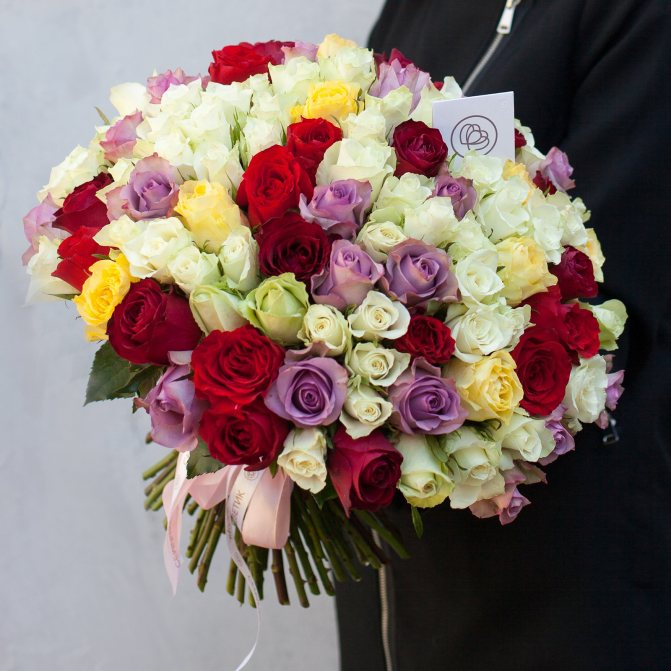

Unripe roses can be placed next to fruits or vegetables to stimulate their flowering.
By following these simple rules, you can be sure that roses will last for many days and look their best!
What varieties, types of roses last the longest?
To grow cut roses, you can plant any variety of roses. But it is advisable not to use climbing and branching varieties for this. Since this option does not look very beautiful in a bouquet.
We suggest that you familiarize yourself with the smell of feet from the pharmacy
Hybrid tea varieties are excellent for cutting. And there are several reasons for this:
- Long stems from 70 to 160 cm, which, in addition to height, are also erect.
- Flowers large in diameter - 10-15 cm
To enjoy the beautiful bloom for as long as possible, it is important to consider:
- Peduncle length - at least 30 cm
- The duration that the flower retains during flowering (after all, there are varieties with flowering no more than 2-3 days)
- Continuity of flowering (so that you can harvest beautiful buds at least twice a season)


Sphinx
The bouquet will look beautiful and stand for a long time:
- Yellow "Sphinx" and burgundy "Prestige"
- White with a light green hue "Avalanche" with "Peach Avalanche", in which the petals have a delicate apricot tone


Prestige
Monophonic bouquets also look spectacular:
- Bouquet of powder color from roses "Sweets"
- Marsala bouquet "Red desire"
- Carrot color of roses "Cherry brandy"
- Delicate white with pink petals inside "Mimi Eden"


Sweatness
Also consider the smells of roses, because not all varieties have it. Consider important nuances and create wonderful bouquets.
How to prune roses correctly so that they stand longer in the water?
So, we offer you a secret, by performing which you can enjoy beautiful roses in a vase for a long time:
- Tear off the leaves on the pagons to the level that you submerge in the water. That is, everything that is in the water should be without leaves. This way, the leaves will not decay and destroy the rose.
- Cut the stem diagonally while keeping the rose underwater. This will keep the air out of the cut and provide the plant with a long life. You can slightly cut the slices into several pieces to help the plant absorb liquid better.
- The stems at the bottom must be cut off. Since those stems that were not pruned in time will stand at the bottom of the vessel and will not be able to absorb liquid. These roses will dry out quickly.


You only need to prune roses under water.
- In winter, put the bouquet in water, which is equal to room temperature, and in summer the water should be slightly cool.
- Add sugar or vinegar to the water for longer periods of time.
- To keep the flowers from rotting, aspirin, vodka, or alum is ideal to add.
- If you are using chemicals to grow flowers, you can add a few drops of bleach to the water in the vase.
- Do not place bouquets on the window. A cool and dark place is desirable for the bouquet.
- You need to change the water every day and rinse the stems under running water. Spray the flowers with a spray bottle, but so that the liquid does not get inside the bud.
If the bouquet is still attached, then you can revive it as follows:
- The cuts should be renewed on each stem and the flowers should be placed in water for 12 hours. Make sure that no water gets inside the bud. This should be done daily. An excellent option would be to leave the bouquet in the water overnight.
- Roses with updated cuts, place the flowers in hot water. Yes, yes, you read it right, it was hot. So when the liquid cools, you will see how the flower heads will rise and come to life.
Consequences of improper addition of substances
Incorrect feeding of plants can lead to the following consequences:


- roses begin to fade quickly, the water becomes cloudy the very next day;
- the buds ripen too quickly and bloom ahead of time, without having time to gain strength;
- rosebuds remain in an almost closed form, without having time to open, and the plant itself has already begun to fade.
You can find out when you need to revive roses in a vase of water and how to save flowers if they start to wither here.
Thus, there are quite a few ways to extend the life of freshly cut roses at home. First of all, you should prepare the water in advance by disinfecting it with coal, vodka, potassium permanganate or other means.
It is also worth paying attention to the saturation of water with nutrients. For this purpose, you can use vinegar, sugar, citric acid. It should also be noted that first of all, preference should be given to more natural and less aggressive substances, to do minimal harm to delicate roses.
If you find an error, please select a piece of text and press Ctrl + Enter.
What kind of water should you put roses in to make them last longer?
An important aspect that will help roses delight the eye for longer is the right water. It really isn't as easy as it sounds. Roses will not last long in all water.
- A lot of roses come to the market by air from different warm countries. Most of the flowers come from Africa. Therefore, it is important to immediately apply resuscitation to flowers. First of all, you need to leave them soak for several hours.
- Pour water not ice cold, but cool or room temperature, depending on the season.
- Do not leave roses in water for more than a few hours. Since, due to a long stay in the water, the process of decay can begin.
- It is not advisable to put roses in chlorinated water, as flowers are extremely negative about such water. If there is no other option, then try to defend the water before placing the bouquet in the vase.


It is important to choose the right water for roses.
- Chlorine, of course, is an antibacterial component, therefore its presence in settled water has a positive effect in the fight against plant bacteria.
- If the water is still without chlorine, then in order to obtain a disinfecting effect, you need to throw aspirin into the vase and at the rate of ½ tablet per 1 liter of water.
- Sugar contributes to the longer lasting beauty and freshness of flowers. It must be thrown at the rate of 2 tsp per 1 liter of liquid.
- Change the water every morning and remember to add the above ingredients. At night, put the flowers in a bath of water, while protecting the buds from getting liquid.
Competent choice of vessel
For a competent selection of vases for a particular bouquet, you must have at least three types of vessels at home.
This criterion is extremely important, because roses need free space. The height of the vase should be 40 to 60 percent of the length of the shoots.
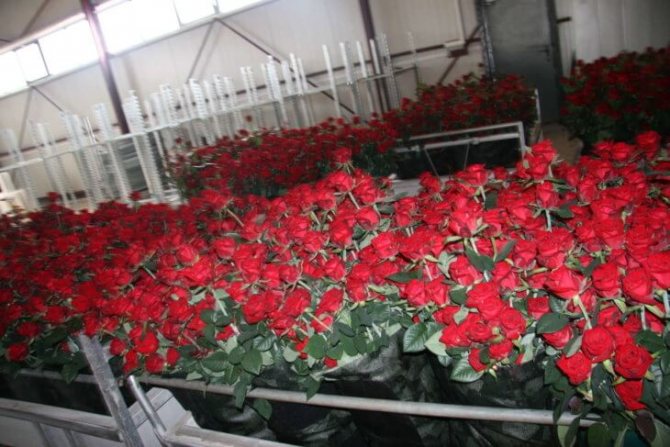

Roses in bouquets
It is recommended to focus on the free space, which should be enough when placing all the plants in the vase. Roses should not be pressed against each other.
For the best storage of plants, a ceramic vase is suitable, which will not let in sunlight and will allow the water to remain fresh for as long as possible.


